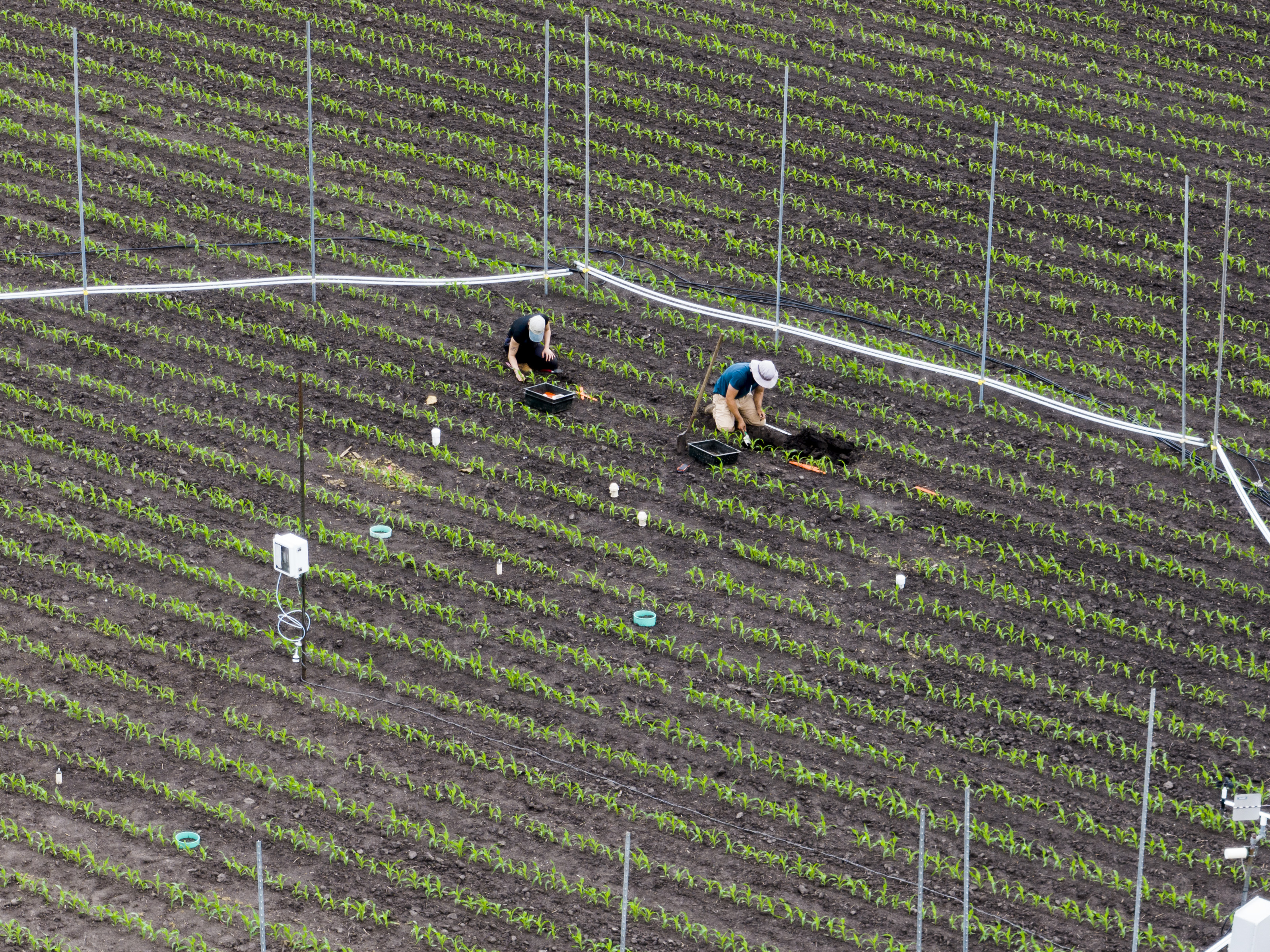RockFACE at SoyFACE: Increasing CO2 uptake
Throughout Earth’s history, rock weathering has been critical for maintaining relatively constant temperatures by removing excess CO2 from the atmosphere. Rock weathering acts similarly to a thermostat; in theory, as CO2 levels rise, so does the weathering rate, which eliminates much of the excess CO2 and reduces the greenhouse effect. This is especially apparent when Earth’s climate is contrasted with that of Venus; with no liquid water, the planet has no means of rock weathering, contributing to the drastically high CO2 levels in its atmosphere.
Because of its importance toward climate control, agricultural scientists at the University of Illinois Urbana-Champaign have been experimenting with increased levels of rock weathering in a project called RockFACE. The project, which takes place in the Soybean Free Air Concentration Enrichment (SoyFACE) facility, revolves around the sprinkling of finely ground silicate-basalt over the cropland. When exposed to a combination of CO2 and water, basalt reacts with both in a weathering process and forms a new substance, bicarbonate, which traps CO2. The bicarbonate then dissolves in groundwater, where it travels through rivers to the ocean. The CO2 is then stored in limestone at the ocean floor.
“Our goal (at RockFACE) is to take advantage of this process and speed it up to remove more CO2,” says Megan Allen, a graduate student in the Department of Crop Sciences. Although studies on rock weathering are occurring worldwide, RockFACE is currently the only one that takes place under heightened CO2 conditions.

Team members apply the silicate-basalt mixture to a field trial within one of the SoyFACE octagons.
Scientists are utilizing Illinois fields for this experiment for a combination of scientific and logistical reasons. Plants can speed up the weathering process, as can hot, humid environments. So the Midwest, with its swaths of croplands and humid summers, is an ideal location. Although a rainforest might be even more efficient, spreading basalt over that type of environment wouldn’t work logistically. The resources for that kind of project are too hard to come by.
“Tractors are already made for moving large amounts of inputs to fields,” says Mary Durstock, a United States Department of Agriculture Agricultural Research Service (USDA-ARS) team member. “With people already amending soils with lime, fertilizers, pesticides and other amendments, croplands are an infinitely more realistic choice of ecosystems to test enhanced rock weathering.”
Farmers also have an incentive to implement basalt into their fields. Rock weathering deacidifies soil, a process that aids in efficient nutrient absorption in plants. The current mainstream method of deacidification is to apply limestone, but this process adds CO2 to the air instead of drawing it out.
“A main drawback from the farmer’s perspective is just that you have to apply so much more (basalt) to get the same pH effect,” says Allen. “Economically, it may not work out in the farmers’ favor.” For this reason, carbon credits, extra money granted for contributing to the minimization of CO2 emissions, could be used as an incentive to adopt the practice. The team of researchers are still in the early stages of this study. The timescales over which CO2 capture and deacidification take place are long, so estimates of rock weathering rates and potential CO2 capture have largely been made via computer simulations- and even those have given too wide a range of numbers for scientists to be sure what the long-term effects would be.
It is vital to remember that rock weathering is only a small part of the action necessary to combat climate change. If we are to truly see results, we need to cut emissions.
“This is not a replacement for cutting emissions. This is not a solution for climate change,” says Allen. “Rock weathering must be implemented along with more drastic measures to cut emissions if we want to meaningfully slow climate change in the conceivable future.”
Durstock and Allen are both members of RIPE Deputy Director Lisa Ainsworth’s lab. This story was written by RIPE science communication intern Violet Moore.
